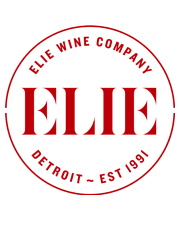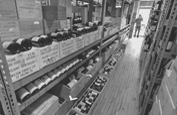Old Vine Grenache from Côtes-du-Rhône
Maxime-François Laurent “Pourpre” (Côtes-du-Rhône Rouge, 2014)
~$25/bottle
The Southern Rhône is a magical place. On a sweeping tumble of broad terraces beneath villages of ancient glory lie sun-drenched vineyards filled with the scents of thyme and lavender. To drink a good bottle of Côtes-du-Rhône is to drink the warmth of southern France.
In an area as extensive as southern Rhône there are all sorts nuances separating different vineyards. Maxime-François Laurent captures the essence of 50-80 year old grenache vines growing from clay and limestone soils, and the microclimate of the northeastern village of Montbrison-sur-Lez. He translates this into a wine of ripe, dense fruit that avoids being overblown or jammy.
 Young Maxime-François’ star has plenty of years ahead to rise. He grew up at the esteemed Domaine Gramenon watching his talented father Philippe produce edgy wines until his tragic death in 1999. His mother, Michèle, stepped in to the role of vigneron and has brought the wines of Domaine Gramenon to near cult status. After schooling and winemaking experience in Burgundy, Maxime-François returned home to work beside his mother and begin bottling two cuvées at the domaine under his own name.
Young Maxime-François’ star has plenty of years ahead to rise. He grew up at the esteemed Domaine Gramenon watching his talented father Philippe produce edgy wines until his tragic death in 1999. His mother, Michèle, stepped in to the role of vigneron and has brought the wines of Domaine Gramenon to near cult status. After schooling and winemaking experience in Burgundy, Maxime-François returned home to work beside his mother and begin bottling two cuvées at the domaine under his own name.
The Laurents do not merely champion biodynamic farming, they incorporate the concept of sustainability into their daily lives by growing their own food and raising their own animals. Their approach to winemaking is similar. The harvest is hand-picked and sorted to ensure only the best fruit is selected. The cellar is gravity-fed for minimal handling of the juice. The wines are typically aged in neutral oak demi-muids and foudres. All fermentations are natural, using only indigenous yeasts, and sulfur additions are daringly minimal.
The result are wines of freshness and purity. A bottle of Pourpre will add a little liquid sunshine to any cool autumn day.
- - -
Posted on 2015.09.30 in France, Saturday Sips Wines, Southern Rhone | Read more...
New Arrivals: Rare French
We received a mere four cases each of these two wines (the entire allocation for the state). These are the top cuvées for both winerys and both wines are only made in the best vintages. We’re already down to a handful of bottles of Lapierre and a couple of cases of Sang des Cailloux. If you’re interested don’t hesitate to give us a call or an email to reserve your bottles.
 Domaine Lapierre “Cuvée Marcel Lapierre MMXIV” (Morgon, 2014)
Domaine Lapierre “Cuvée Marcel Lapierre MMXIV” (Morgon, 2014) $46/bottle SOLD OUT
Lapierre is a benchmark in Beaujolais. The grapes for this wine come from the best plots of 100+ year old vines. This is about as powerful as the gamay grape variety gets. Concentrated, racy, and a monumental finish. It’s a wine worthy of cellaring for five to eight years if you can keep your hands off of it for that long.
 Domaine le Sang des Cailloux “Oumage Cuvee Lùcca” (Vacqueyras, 2010) ~$67/bottle
Domaine le Sang des Cailloux “Oumage Cuvee Lùcca” (Vacqueyras, 2010) ~$67/bottle
The top producer in Vacqueyras. 2010 was a banner vintage for this Southern Rhône appellation. Mostly grenache from a small selection of very old vine parcels, this newly released wine spent 24 months in barrel and 30 months in bottle. It’s a wine to rival, or exceed, the best from Châteauneuf-du-Pape. Drink now or cellar for another decade.
- - -
Posted on in France, Beaujolais, Southern Rhone | Read more...
A Dugat-Py Retrospective
Burgundy is much more than Pinot Noir from France. It’s a winemaking region with more classified geological complexity and nuance than any other in the world. And Elie Wine Company is not an average wine shop. We have visitors from Burgundy that admit our selection is deeper than most all wine shops IN Burgundy. Not only do we offer eleven different vineyard bottlings from Domaine Dugat-Py, from their regional appellation wines to Grand Cru wines, we have wines throughout the 1996 to the 2013 vintages. That’s commitment.
Domaine Dugat-Py is recognized by consumers and press alike to be one of the top producers of Pinot Noir wines in the entire world. Considering the prominence that this Gevrey-Chambertin Domaine has achieved, it’s astonishing that they had only begun estate bottling in 1989. But they are certainly no newcomers to Burgundy. Winemaker Bernard Dugat and his son, Loïc, are the 12th and 13th generations in a lineage of vignerons that goes back to the early 17th Century.
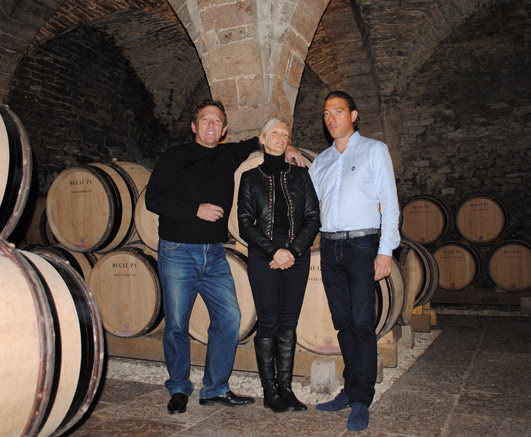 Family history does not guarantee quality. Much of Dugat-Py’s success comes from obsessive work in the vineyards. There are five full-time vineyard workers for a mere 25 acres of vines. All the trimming is done by hand and a horse is used to plow the vineyards. Replanting is done with selections from their own vine stock, never with clones. The domaine has been fully organic since 2003 but Loïc has recently introduced some biodynamic practices.
Family history does not guarantee quality. Much of Dugat-Py’s success comes from obsessive work in the vineyards. There are five full-time vineyard workers for a mere 25 acres of vines. All the trimming is done by hand and a horse is used to plow the vineyards. Replanting is done with selections from their own vine stock, never with clones. The domaine has been fully organic since 2003 but Loïc has recently introduced some biodynamic practices.
The wines are vinified with as little intervention as possible. Domaine Dugat-Py’s barrels rest in the cellars of L’Aumônerie built by Abbot Halinard in the 11th Century. Although the small abbey above them is gone, these solid, vaulted cellars are ideal for aging the wines between 18 months and two years before bottling, unfined and unfiltered.
Appellations
Grand Cru
Mazis-Chambertin (Grand Cru, 1996)
70 years average age of vines, annual production of 800 to 1100 bottles
Charmes-Chambertin (Grand Cru, 2013)
35 years average age of vines, annual production of 1800 to 2400 bottles
Premier Cru
Gevrey-Chambertin – Lavaux-Saint-Jacques (Premier Cru, 2011, 1996)
45 years average age of vines, annual production of 500 to 750 bottles
Gevrey-Chambertin – Champeaux (Premier Cru, 2011)
55 years average age of vines, annual production of 1200 to 1800 bottles
Village
Gevrey-Chambertin – “Cuvée Cœur de Roy” (2013, 2011,1998, 1997, 1996)
Age of vines in the plot from 50 to 99 years, with one plot planted in 1910, annual production of 4800 to 5100 bottles
Gevrey-Chambertin – “Evocelles” (1998, 1996)
65 years average age of vines, annual production of 1500 to 2400 bottles
Gevrey-Chambertin – “Vieilles Vignes” (2013, 1997, 1996)
Age of vines in the plot from 30 to 50 years, annual production of 3000 to 4000 bottles
Vosne-Romanée – “Vieilles Vignes” (2013)
75 years average age of vines, annual production of 900 to 1200 bottles
Pommard – “La Levrière Vieilles Vignes” (2013, 2011)
70 years average age of vines, annual production of 2000 to 2700 bottles
Bourgogne
Bourgogne – “Cuvée Halinard” (2013)
Declassified Gevrey-Chambertin, age of vines in the plot from 25 to 75 years, annual production of 2500 to 3500 bottles
Bourgogne (1997)
35 years average age of vines, annual production of 3000 to 4000 bottles
- - -
Posted on 2015.09.24 in France, Saturday Sips Wines, Burgundy | Read more...
Embrace Autumn with a Brilliant Red from Italy’s Piedmont
Hilberg-Pasquero (Barbera d’Alba, 2013)
~$24/bottle
There will still be a few days left this year to sneak some rosé on the patio but autumn is approaching fast. Just because you may need an evening sweater doesn’t mean it’s time to break out the classified Bordeaux and beef roast. Make the transition effortless with the ripe raspberry and black cherry fruit aromas of this benchmark Barbera d’Alba. It’s bright enough to drink easily on a warm and golden day yet has the body and tannic weave that will hold up to the arrival of the old brown earth.
The quality of Italy’s Piedmont wines owes much to traditional concepts of viticulture, a stubborn preference for native grape varieties, and a healthy conviction that vineyards belong on hills and not plains. This is Hilberg-Pasquero in a nutshell.
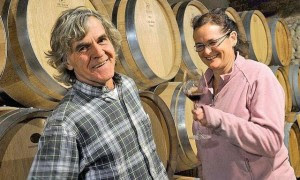 The Pasquero farm was founded in the early 20th Century on a hilltop (Bricco Gatti) of the Roero hills north of the Tanaro River valley, a stone’s throw from Barbaresco. Today, it’s run by the husband and wife team of Michelangelo “Miklo” Pasquero and Annette Hilberg. There they are raising their three children (Nicola, Aline and Nils) in addition to celery, leeks, tomatoes, peppers, cucumbers, pumpkins, corn, grain, Borlotti beans, rabbits, geese, hens, cows, pigs, horses, and, of course, grape vines.
The Pasquero farm was founded in the early 20th Century on a hilltop (Bricco Gatti) of the Roero hills north of the Tanaro River valley, a stone’s throw from Barbaresco. Today, it’s run by the husband and wife team of Michelangelo “Miklo” Pasquero and Annette Hilberg. There they are raising their three children (Nicola, Aline and Nils) in addition to celery, leeks, tomatoes, peppers, cucumbers, pumpkins, corn, grain, Borlotti beans, rabbits, geese, hens, cows, pigs, horses, and, of course, grape vines.
Miklo has always had a passion for biodynamic farming. That, coupled with his non-interventionist approach to winemaking, shows in the purity of his wines. Working with a steel crusher from the 1960s out of a tiny cellar in the town of Priocca, Miklo converts the sun’s energy into tiny amounts of award-winning wines. Annual production of Hilberg-Pasquero Barbera d’Alba is a mere 300 cases. It’s remarkable that Detroit sees this wine at all.
- - -
Posted on 2015.09.16 in Saturday Sips Wines, Piedmont, Italy | Read more...
New Arrivals Italian-Style September 2015
We are always finding new and interesting wine. Quite often they are tiny production from family farms and we might never get a chance to let you know before they are all gone. Here are just a few of the new Italian wines that have arrived in the past few weeks.
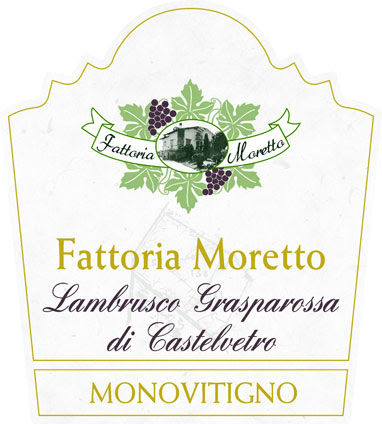 ~$23 Fattoria Moretto “Monovitigno” (Lambrusco Grasparossa di Castelvetro Secco, 2014)
~$23 Fattoria Moretto “Monovitigno” (Lambrusco Grasparossa di Castelvetro Secco, 2014)
~$16 Fattoria Moretto (Lambrusco Grasparossa di Castelvetro Secco, 2014)
Salumi, formaggio, prosciutto, pizza…this slightly fizzy, dry red wine from the Emilia Romagna region of Italy is made for food. The Altariva family is producing purple wines that are loads of fun yet still real wines with concentration and aromatics serious enough to satisfy the most discriminating drinkers. The “monovitigno” is from a four acre single vineyard near the town of Modena that’s planted with vines over 40 years old.
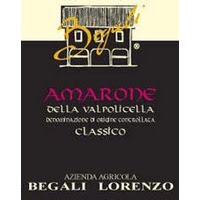 ~$44 Begali (Amarone della Valpolicella Classico, 2011)
~$44 Begali (Amarone della Valpolicella Classico, 2011)
Lorenzo Begali and his family are steadily growing the repute of their winery to benchmark status. Like all Amarone, the aromatics and mouthfeel are rich and powerful but Begali’s wines never feel too heavy, chewy or thick. This wine is marked by long flavors of smoke, ripe fruit, tobacco and grilled herbs.
 ~$50 Vigne Marina Coppi “Fausto” (Colli Tortonesi, 2011)
~$50 Vigne Marina Coppi “Fausto” (Colli Tortonesi, 2011)
Colli Tortonesi is a stone’s throw from the well-known region of Gavi. There is a movement at hand to bring Timorasso, a grape that was only retrieved from obscurity in the past 15 years and has the most character of all Piedmont’s native white varieties, the recognition it deserves. Francesco Bellocchio is at the forefront of that movement. Fausto is a full-bodied white wine with multi-layered aromatics of crushed stone and dried flowers.
- - -
Posted on 2015.09.15 in Piedmont, Emilia-Romagna, Italy, Veneto | Read more...
Featured Wines
- Notebook: A’Boudt Town
- Saturday Sips Wines
- Saturday Sips Review Club
- The Champagne Society
- Wine-Aid Packages
Wine Regions
Grape Varieties
Aglianico, Albarín Blanco, Albillo, Aleatico, Alicante Bouschet, Altesse, Arcos, Aubun, Auxerrois, barbera, Beaune, Bonarda, Cabernet Franc, Cabernet Sauvignon, Caino, Caladoc, Carcajolu-Neru, Carignan, Chablis, Chardonnay, Chasselas, Chenin Blanc, Cinsault, Cortese, Corvina, Corvinone, Cot, Erbamat, Ferrol, Fiano, folle Blanche, Frappato, Friulano, Fromenteau, Fumin, Garganega, Garnacha, Gewurztraminer, Godello, Grenache, Grolleau, Jacquère, Lambrusco, Lladoner Pelut, Loureira, Macabeo, Macabou, Maconnais, Malvasia, Malvasia Nera, manseng, Marsanne, Melon de Bourgogne, Mencía, Merlot, Mondeuse, Montanaccia, Montepulciano, Morescola, Morescono, Moscatell, Mourv, Mourvèdre, Muscadelle, Nebbiolo, Nero d'Avola, Palomino, Parellada, Pecorino, Persan, Petit Meslier, Petit Verdot, Pinot Auxerrois, Pinot Blanc, Pinot Meunier, Pinot Noir, Poulsard, Prieto Picudo, Rondinella, Rose, Roussanne, Sangiovese, Sauvignon Blanc, Savignin, Semillon, Souson, Sparkling, Sylvaner, Syrah, Tannat, Teroldego, Timorasso, Trebbiano, Treixadura, trepat, Trousseau, vaccarèse, Verdicchio, Viognier, ViuraWines & Events by Date
- September 2025
- August 2025
- July 2025
- June 2025
- May 2025
- April 2025
- March 2025
- February 2025
- January 2025
- December 2024
- November 2024
- October 2024
- September 2024
- August 2024
- July 2024
- June 2024
- May 2024
- April 2024
- March 2024
- February 2024
- January 2024
- December 2023
- November 2023
- October 2023
- September 2023
- August 2023
- July 2023
- June 2023
- May 2023
- April 2023
- March 2023
- February 2023
- January 2023
- December 2022
- November 2022
- October 2022
- September 2022
- August 2022
- July 2022
- June 2022
- May 2022
- April 2022
- March 2022
- February 2022
- January 2022
- December 2021
- November 2021
- October 2021
- September 2021
- August 2021
- July 2021
- June 2021
- May 2021
- April 2021
- March 2021
- February 2021
- January 2021
- December 2020
- November 2020
- October 2020
- September 2020
- August 2020
- July 2020
- June 2020
- May 2020
- April 2020
- March 2020
- February 2020
- January 2020
- December 2019
- November 2019
- October 2019
- September 2019
- August 2019
- July 2019
- June 2019
- May 2019
- April 2019
- March 2019
- February 2019
- January 2019
- December 2018
- November 2018
- October 2018
- September 2018
- August 2018
- July 2018
- June 2018
- May 2018
- April 2018
- March 2018
- February 2018
- January 2018
- December 2017
- November 2017
- October 2017
- September 2017
- August 2017
- July 2017
- June 2017
- May 2017
- April 2017
- March 2017
- February 2017
- January 2017
- December 2016
- November 2016
- October 2016
- September 2016
- August 2016
- July 2016
- June 2016
- May 2016
- April 2016
- March 2016
- February 2016
- January 2016
- December 2015
- November 2015
- October 2015
- September 2015
- August 2015
- July 2015
- June 2015
- May 2015
- April 2015
- March 2015
- February 2015
- January 2015
- December 2014
- November 2014
- October 2014
- September 2014
- August 2014
- July 2014
- June 2014
- April 2014
- March 2014
- February 2014
- January 2014
- December 2013
- November 2013
- October 2013
- September 2013
- August 2013
- July 2013
- June 2013
- May 2013
- April 2013
- March 2013
- February 2013
- January 2013
- December 2012
- November 2012
- October 2012

